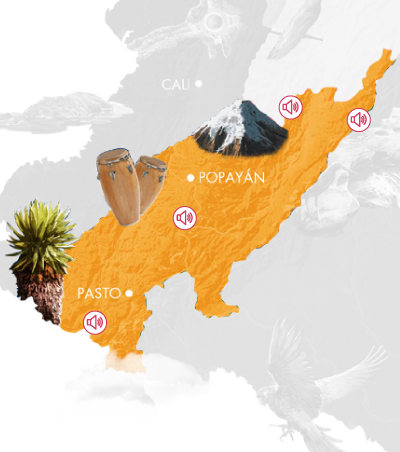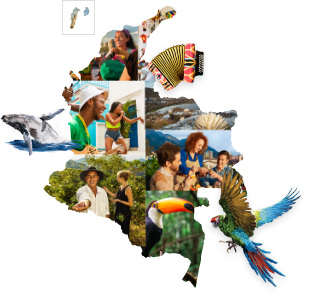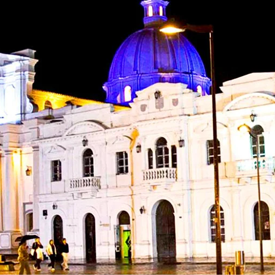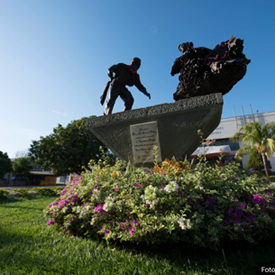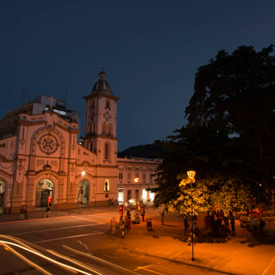Nariño, Colombia, a territory of contrasts | Colombia Travel
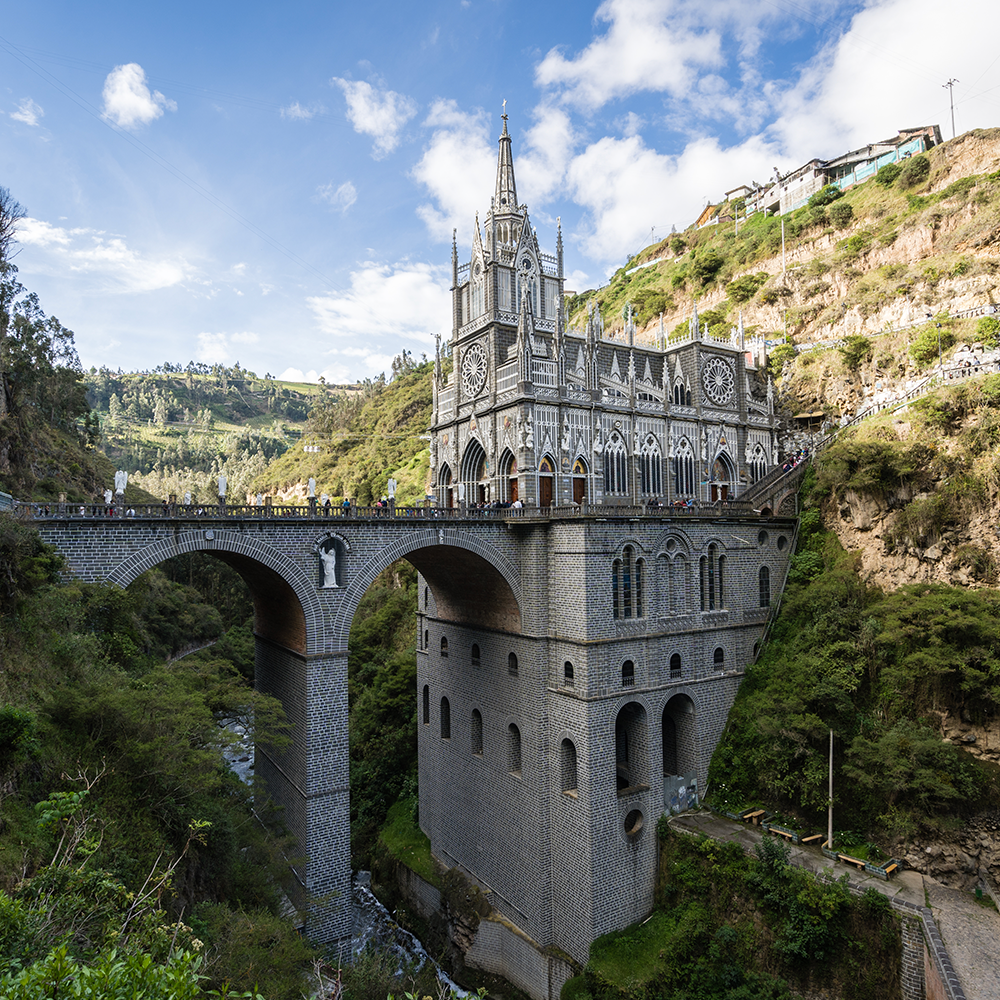
Alt: The Sanctuary of Our Lady of Las Lajas, located 7km from the city of Ipiales, is one of the most visited religious destinations in Colombia.
Credit: Jolyn Chua // Shutterstock.com
Nariño is a destination full of contrasts, where the Pacific coast, the Andes and the Amazonian foothills converge, and whose culture is the result of strong indigenous and Afro-descendant legacies that rescue the connection with nature and spirituality.
The department of Nariño belongs to the Colombian massif, a region covered by moors, mountains and volcanoes, cradle of great rivers and Colombian Andean culture. It has ideal places for travelers looking to disconnect from daily life to appreciate the water and sounds of the earth, as well as a culture full of strong indigenous and Afro-descendant legacies that retain their connection with nature, their roots and spirituality.
Privileged geography
Nariño, Colombia, is a territory of contrasts where the Pacific coast, the Andes and the Amazonian foothills converge. On the Pacific coast are places such as the Río Ñambi and La Planada Nature Reserves, highlighted by the diversity in flora and fauna. There is also the municipality of Tumaco, a destination that attracts for the warmth of its people, the gastronomy and its unique landscapes such as El Morro Beach, where travelers can walk under a natural stone arch.
On the mountain ranges, for its part, Nariño houses the Sanctuary of Fauna and Flora Galeras, an important site for ecological and adventure tourism. Its main attraction is the Galeras Volcano, but it also houses lagoons, lagoons, 120 rivers and is also home to 16 species of hummingbirds and 6 species of frogs.
Here is also the Green Lagoon, hidden in the crater of the Azufral Volcano, whose color and location make it one of the most beautiful in the world.
Finally, on the Amazonian foothills, there is the Laguna de la Cocha, one of the largest natural wetlands in the country, ideal for tourists interested in guided walks, sport fishing, hiking and camping.
Featured: Download the magazine about the department of Chocó, a land of African and indigenous heritage in the Colombian Pacific region.
Hospatient and spiritual people
In Nariño the indigenous element is proudly displayed. Whites and mestizos still use Quichua words, are proud to be part of the Qhapaq Ñan and celebrate the Inti Raymi or Fiesta del sol. In addition, the values of hospitality and brotherhood inherited from the indigenous world are kept alive. Afro-descendants, whose presence is strongest on the Pacific coast, are valued from the gastronomy and are characterized by being cheerful and familiar.
This mixture of identities makes visitors who arrive in the department of Nariño meet hardworking, helpful, insightful, spiritual and attached to tradition. Its people are, without a doubt, one of the treasures to highlight of this region of Colombia.
The Emblematic Venues and Party
Art, architecture, history and religion play a preponderant role in San Juan de Pasto, the capital of the department. These are reflected in points of great interest such as the Nariño Gold Museum, the Alfonso Zambrano Museum, the Marine Park, the House of Sebastián de Belalcázar, the University of Nariño and the Imperial Theater.
Pasto also exhibits numerous temples for religious tourism, especially at Easter. The most visited are the Santuario de la Merced, the Cristo Rey Church, San Felipe, Santiago, Fátima and the San Juan Bautista Cathedral.
Outstanding quote: Outside Pasto, in the municipality of Ipiales, is the Sanctuary of Our Lady of Las Lajas, which rises between two mountains connecting nature with the spiritual world.
As for their festivals and celebrations, the Nariñenses are proud of the Carnival of Blacks and Whites of Pasto, declared Oral and Intangible Heritage of Humanity by UNESCO, and Cultural Heritage of Colombia. Through comparsas, floats, murgas and costumes, this festival celebrates the miscegenation and the Afro, indigenous and white identities that inhabit the territory.
Other outstanding celebrations are the Carnival of the Reds of Buesaco, the Meeting of Andean Music, the Multicolored Carnival of the Border, The Pilgrimage to the Sanctuary of the Lajas in Ipiales, the Guacahez Corn Festival and the Pacific Music Festival that takes place in Tumaco.
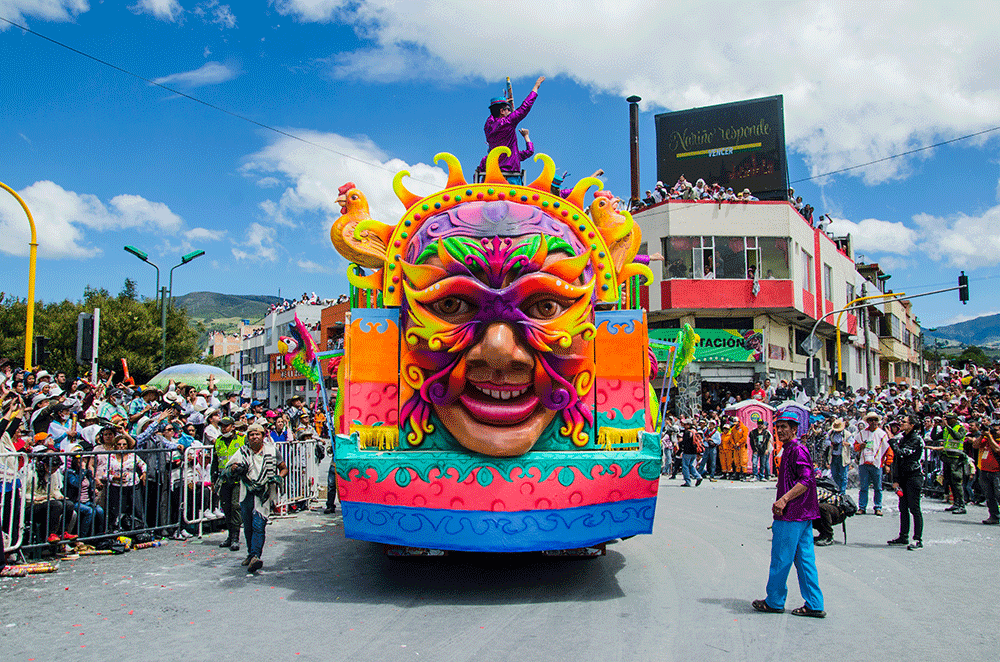
Photo capt: The Carnival of Blacks and Whites is celebrated every year in Pasto, during the first week of January and attracts a large number of national and foreign tourists.
Department of exquisite flavors
The gastronomy of Nariño is characterized by the products of the mountains and the valleys. Some of the most popular dishes are the boiled pastuso, a drink based on fruit juice with sugar cane liqueur, the nariñense tamal, the peanut pepper, the aged empanadas, the roasted guinea pig, the fried pastuso, the pork loin with blackberry or lulo, the dessert of tomatoes and the pambazas, a special wheat bread.
In Tumaco, due to its proximity to the pacific sea, preparations such as fish encocados, crab or shrimp, shell ceviche (shrimp or prawns) and seafood casserole stand out. Among the drinks are the arrechón and the biche.
Featured: Learn more about the department of Nariño in the magazine and podcast.
Finally, Nariño's handicrafts should be highlighted. The most desired by travelers are the cathedrals, carnival floats and miniature guinea pigs, made of ceramics, Iraca hats and bags of the Sandoneña culture, the filigree in gold and the Pasto Varnish or Mopa Mopa.
Photo caption: The Pasto Varnish or Mopa is a traditional technique that in 2020 was declared Intangible Heritage of Humanity by Unesco.



